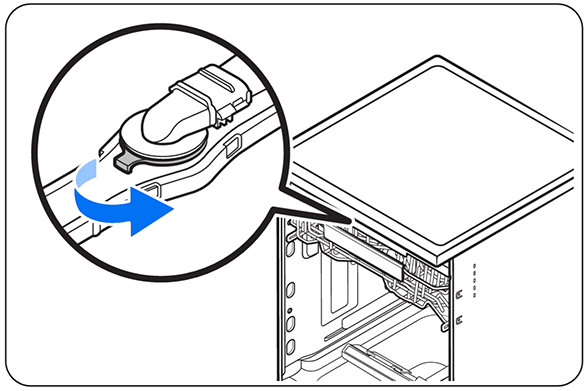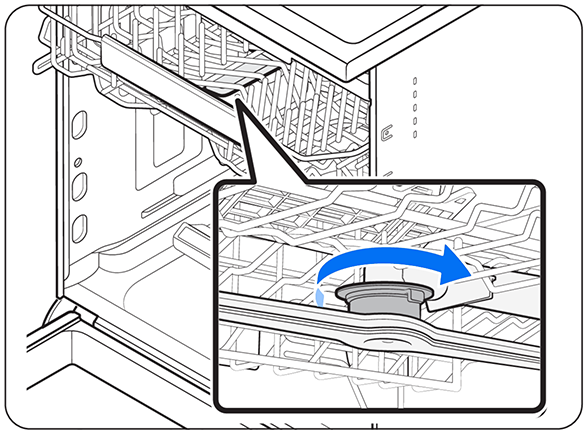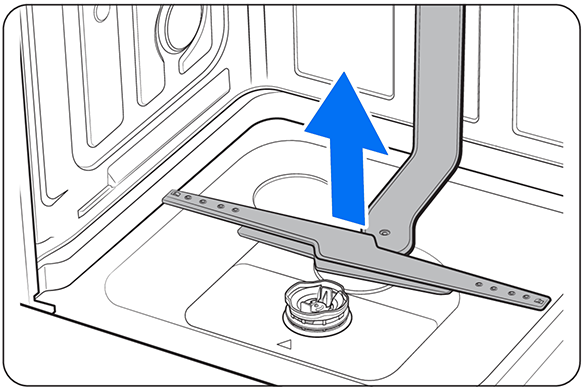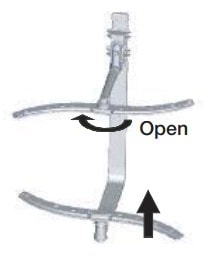Clean and Maintain your Samsung Dishwasher
![]() Please Note: The information on this page is for Australian products only. Models, sequences, error codes or settings will vary depending on location and/or where the product had been purchased. To be redirected to your local support page please click here.
Please Note: The information on this page is for Australian products only. Models, sequences, error codes or settings will vary depending on location and/or where the product had been purchased. To be redirected to your local support page please click here.
Is your dishwasher not cleaning the dishes like it used to? This could be due to a build-up of food scraps in the filters or you may just need to clean the spray arms.
To maintain a good wash every time in your Samsung Dishwasher, it is a good idea to clean and care for the different components. Below are instructions for disassembling certain sections of your dishwasher to clean and also instructions on cleaning sections that cannot be removed.
Note: Designs can vary depending on the model of your dishwasher. To check the design specific to your model, please refer to your user manual.
Filtering System
For your convenience, we have placed the drain pump and filtering system within easy reach inside the tub. There are three components of the filtering system: the main filter, the coarse filter, and the fine filter. It is important that you clean the filters regularly to maintain optimal operation.


Note: Do not place the fine filter upside down when reassembling.
Clean spills on the surface of the dishwasher immediately. Use a soft, damp cloth on the control panel to gently wipe away spills and dust.
CAUTION:
- Do not use benzene, wax, thinner, chlorine bleach, alcohol, or other chemical substances. These materials may discolour the surface of the dishwasher and cause stains.
- The dishwasher has electric parts inside. Do not spray water directly onto the dishwasher. Protect electrical components from water.
- For a stainless-steel door panel, use a stainless steel cleaner for home appliances and a clean, soft cloth.
Clean the interior of the dishwasher on a regular basis to remove any first or food particles. Wipe inside the dishwasher and inside the door with a wet dishcloth.
CAUTION:
- Do not remove the front seal (the long rubber seal enclosing the opening of the dishwasher). The seal keeps the inner side of the dishwasher sealed.
- Use a damp cloth to remove lime scale or grease deposits inside the dishwasher. Alternatively, apply some detergent and run an empty cycle using the highest rinse temperature.
To prevent the nozzles from being clogged or if the nozzles are clogged, remove and clean. Use caution when removing the nozzles as they may break.
Top nozzle:
1. Open the door, and then pull out the upper rack. The top nozzle is visible on the top.
2. Turn counter clockwise and remove the nozzle cap, then remove the nozzle.
3. Unclog and clean the nozzle.
4. Reinsert the nozzle and tighten the cap clockwise.
5. Rotate the nozzle by hand to make sure the nozzle is engaged correctly.

Upper nozzle:
1. Open the door pull out the upper rack to reveal the upper nozzle.
2. Loosen and remove the nut, then remove the nozzle.
3. Unclog and clean the nozzle.
4. Reinsert the nozzle and tighten the nut by hand.
5. Rotate the nozzle by hand to make sure the nozzle is engaged correctly.

Lower nozzle:
1. Open the door and pull out the upper rack to reveal the lower rack. The lower nozzle is visible on the bottom.
2. Unclog and clean the nozzle.
3. Reinsert the nozzle.
4. Rotate the nozzle by hand to make sure the nozzle is engaged correctly.

It is necessary to clean the spray arms regularly as hard water residue can clog the spray arm jets and bearings. To remove the middle spray arm, hold the nut and rotate the arm clockwise to remove it. To remove the lower spray arm, pull out the spray arm upward. Wash the arms in warm and soapy water and use a soft brush to clean the jets. Replace them after rinsing thoroughly.

To clean the edge around the door, you should use only a soft warm, damp cloth.
Never use abrasive cleaners or scouring pads on the outer surfaces as they will scratch the finish. Some paper towels can also scratch or leave marks on the surface.
Note: Never use a spray cleaner to clean the door panel as it could damage the door lock and electrical components. It is not advised to use abrasive agent or paper towel because of the risk of scratching or leaving spots on the stainless steel surface.
After Every Wash
- After every wash, turn off the water supply to the appliance and leave the door slightly ajar so that moisture and odours do not get trapped inside.
Remove the Plug
- Before cleaning or performing maintenance, always remove the plug from the socket.
No Solvents or Abrasive Cleaning
- To clean the exterior and rubber parts of the dishwasher, do not use solvents or abrasive cleaning products. Use only a cloth and warm soapy water. To remove spots or stains from the surface of the interior, use a cloth dampened with water and a little white vinegar, or a cleaning product made specifically for dishwashers.
When You Go on Holiday
- When you go on holiday, it is recommended that you run a wash cycle with the dishwasher empty and then remove the plug from the socket, turn off the water supply and leave the door of the appliance slightly ajar. This will help the seals last longer and prevent odours from forming within the appliance.
Moving the Appliance
- If the appliance must be moved, try to keep it in the vertical position. If absolutely necessary, it can be positioned on its back.
Seals
- One of the factors that cause odours to form in the dishwasher is food that is trapped in the seals. Periodic cleaning with a damp sponge will prevent this from occurring.
For further assistance, please contact our Chat Support or technical experts on 1300 362 603. To find your Samsung product's User Manual, head to Manuals & Downloads.
Thank you for your feedback!
Please answer all questions.